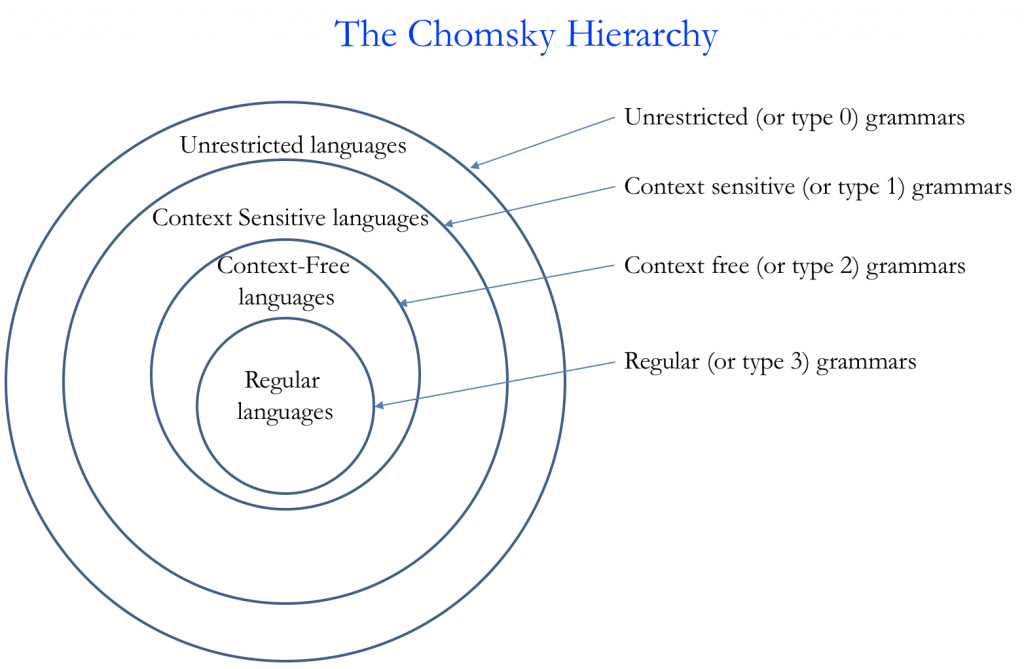The Chomsky hierarchy was introduced by Noam Chomsky in his work on formal language theory, which he presented in 1956 as “On Certain Formal Properties of Grammars”.
He proposed a classification of formal languages into different types (Type 0 to Type 3) based on the generative power of the grammar mechanisms used to describe them. He also defined a set of “grammars” that “generate” those languages.

- Type 0 languages: Type 0 languages, also known as recursively enumerable languages, which can be generated by a Turing machine.
- Type 1 languages: or context-sensitive languages, capable of being generated by linear-bounded automata.
- Type 2 languages: context-free languages, which can be generated by pushdown automata.
Chomsky claimed that all human languages are Type 0 languages and saw this fact as proof that language is innate, supporting his ideas of universal grammar (UG) and the language acquisition device (LAD).
A language is understood as a set (finite or infinite) of sentences, each finite in length and constructed out of a finite set of elements.
The term grammar is one of the most misunderstood terms in language learning.
In the Chomsky hierarchy, “grammar” refers to a set of rules and structures that “generate” a particular language. Think of it as an assembly line that produces symbols, like letters or words.
The “grammar” that the language learning community refers to is an implementation of Chomsky’s grammar for a particular language, and associating meaning to certain parts of structure, like the “present continuous” which refers to situations happening right now.
This concept of “grammar” gets frequently confused with “normative grammars”.
Normative grammar refers to the set of rules and conventions that dictate how a language should be used, particularly in formal or written contexts. It is concerned with establishing norms and standards for linguistic correctness and usage. Normative grammar guides language users on what is considered “correct” or “proper” in terms of vocabulary, syntax, spelling, and punctuation.
But the “grammar” that we really want to learn is a feeling that native speakers have that tells them what is correct and what is not.








